2022 Census
IBGE surveys characteristics of public space in cities
June 20, 2022 10h00 AM | Last Updated: June 22, 2022 04h34 PM
Highlights
- IBGE begins Urban Survey of the Surroundings of the Housing Units. Survey begins on June 20 and ends on July 12.
- Survey produces an overview of the Brazilian urban infrastructure and marks the beginning of the operations of the 2022 Census.
- More than 22 thousand Census Agents will cover 326,643 urban sectors. It represents 72% of the enumeration areas of the Census and the entire public urban area in Brazil.
- Surveying is carried out in the step of recognitions and updating of the maps and assures the coverage of the data collection for the 2022 Census.
- Ten aspects will be investigated, being three new ones: capacity of thoroughfares, pavement of thoroughfares, manholes, street lighting, bus/van stops (new), signnaled bicycle paths (new), existence of sidewalk, presence of obstacles in sidewalks (new), ramps for wheelchair users, afforestation.
- For the first time ever, the Survey of the Surroundings will include every subnormal agglomerate located in urban areas, regardless of regular arrangement of streets. A new methodology will be used to cover labyrinthine areas without GPS signal.
- Besides continuing the series started in 2010, allowing comparison of information, experimental results will be published in 2022 in more detailed levels.

The IBGE begins today (20) the Urban Survey of the Surroundings of the Housing Units. Up to July 12, more than 22 thousand census agents will cover 326,643 urban sectors, in all the Federation Units, registering themes related to the Brazilian urban infrastructure.
“The Survey of the Surroundings is the official milestone that starts the operation of the 2022 Population Census, which begins on August 1st. It is not enumerators going from door to door yet, doing interviews, but rather the first public operation of information collection of the Census,” explains Cláudio Stenner, IBGE´s director of Geosciences. He highlights that this step does not involve any interview: the survey is accomplished through the observation of aspects in the enumeration areas.
Ten aspects will be surveyed, being three new ones: capacity of thoroughfares, pavement of thoroughfares, manholes, street lighting, bus/van stops, signaled bicycle paths, existence of sidewalk, presence of obstacles in sidewalks, ramps for wheelchair users and afforestation.
“The new aspects of the survey in relation to those investigated in the 2010 Census are bus/van stops and signaled bicycle paths, which are related to urban mobility, and presence of obstacles in sidewalks, which is related to accessibility,” points out Filipe Borsani, the technical supervisor of the survey. “In addition, the aspect capacity of thoroughfares improved, as it was asked only in the Survey of Territorial Information (LIT),” complements him.
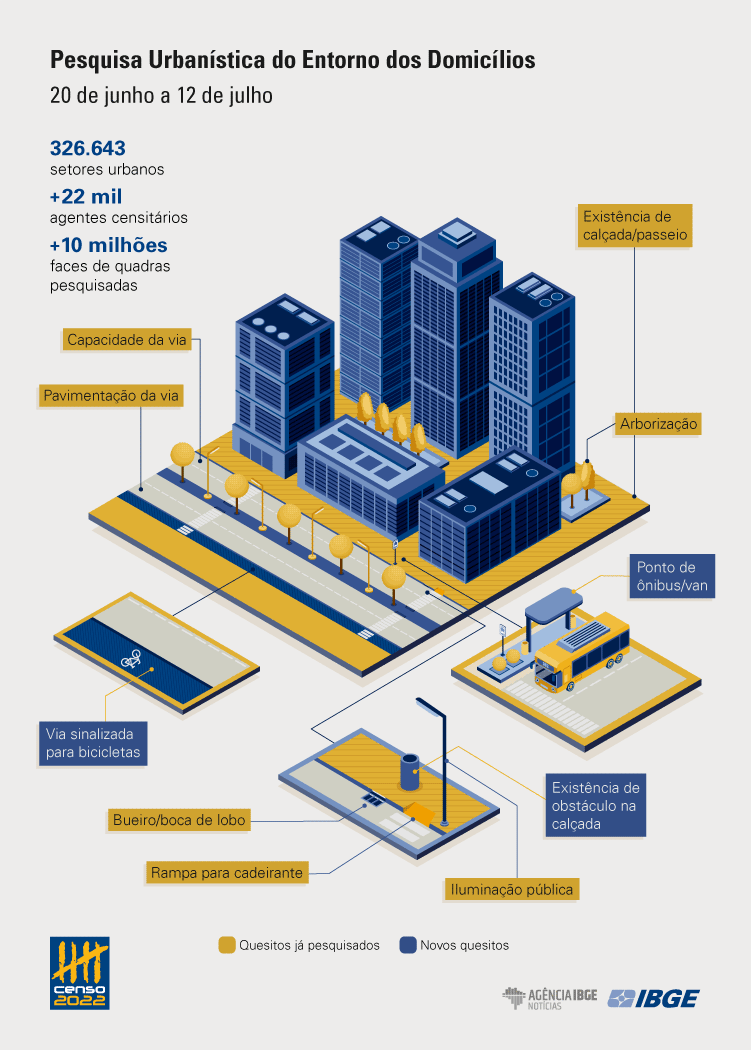
The survey is in-line with the monitoring of Sustainable Development Goal (SDG) 11: Make cities and human settlements inclusive, safe, resilient and sustainable. “It aims at providing an overview of the Brazilian urban infrastructure, considering subjects like accessibility, circulation, public equipment and environment. It is very important for the formulation of public policies in urban areas to improve the quality of life of the population,” highlights the supervisor.
Stenner adds that the Census works in a series of scales: firstly, the surroundings where the housing unit is located is characterized; then, enumerators collect information of the households and persons who live in the households. “Everything articulated and integrated in the Census survey. As the IBGE has geography and statistics in the same institution, that kind of approach is feasible,” states him.
Second edition of the survey will bring more detailed results
This is the second time that the IBGE carries out such survey. The first one, in 2010, comprised 222,541 urban sectors, with results per enumeration area. Besides continuing the series started in 2010, allowing the comparison of information, the intention in the 2022 Census is to publish experimental results in more detailed levels like, for instance, per block face. “It was made in the Dress Rehearsal of Poços de Caldas in 2019 and we want to repeat it at least for the major urban centers,” tells Borsani.

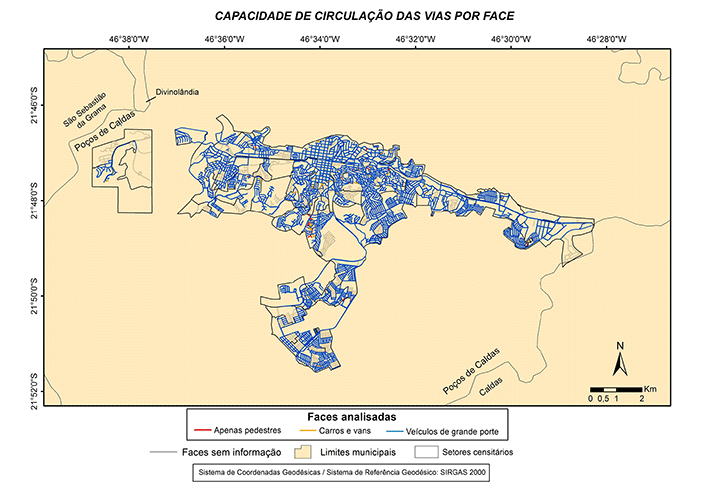
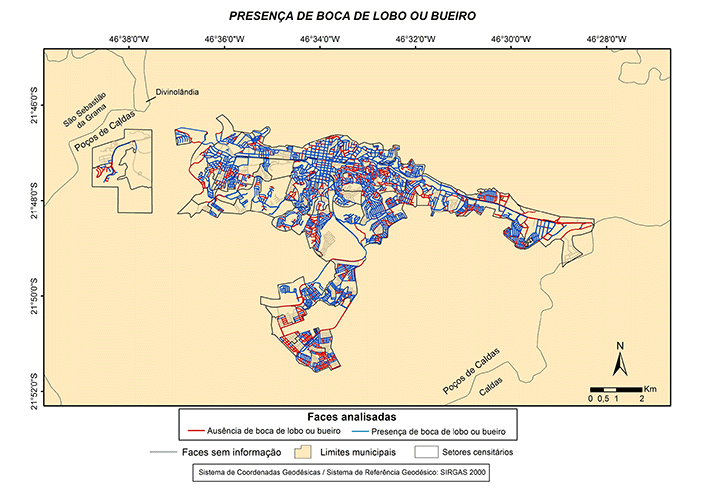
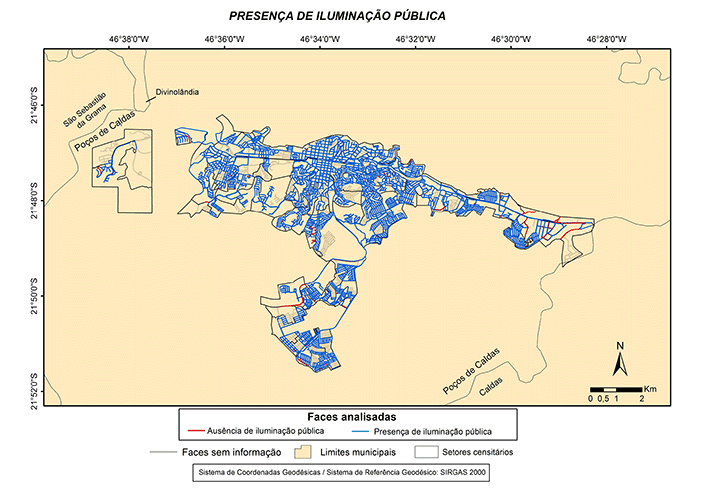




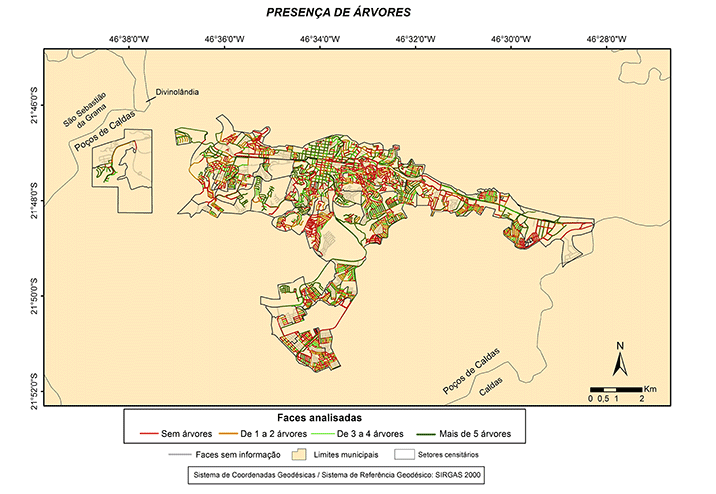
IBGE will survey surroundings in every subnormal agglomerate for the first time ever
Another new feature in 2022 is that the Survey of Surroundings will be carried out in every subnormal agglomerate located in urban areas. In Brazil, subnormal agglomerates are known by a number of names, like slums, invaded properties, slums in deep valleys, slums in low-lands, communities, slums in villages, ressacas, irregular allotments, types of shack and stilt houses, among others.
“In 2010, only subnormal agglomerates with regular arrangement of streets were considered. Now, we will use a new methodology to identify the path in labyrinthine areas without GPS signal,” explains the technical supervisor of the survey.
Step assures the best coverage at data collection time
Besides the survey of the surroundings, agents recognize the enumeration area, by covering the area and assessing the need for updates in the map based on the identification of new avenues and streets. “This step is very important to assure the coverage of the data collection, i.e., assure that all the households will be visited by enumerators,” highlights Maikon Novaes, manager of Territorial Classifications and Regionalization.
The survey is carried out in the entire public urban area in Brazil. “For rural areas, maps are updated during the data collection through the supervision in SIGC (follow-up program) and the geospatial monitoring of the data collection,” explains the manager.
2022 Census: Survey of the Surroundings
In record time, the IBGE will cover more than 10 million block faces, i.e., the sides of the sidewalks that comprise the streets. This represents 72% of the total enumeration areas. Novaes explains that the census agents - who will be in charge of supervising the work of enumerators - check the current maps during the route, search for new addresses or new buildings and assess situations that might streamline the data collection, like, for example, the best access to the enumeration areas and best public transportations.
“We will visit remote areas, areas of small municipalities, never mind: all the Brazilian municipalities will be included,” ensures Novaes.




















